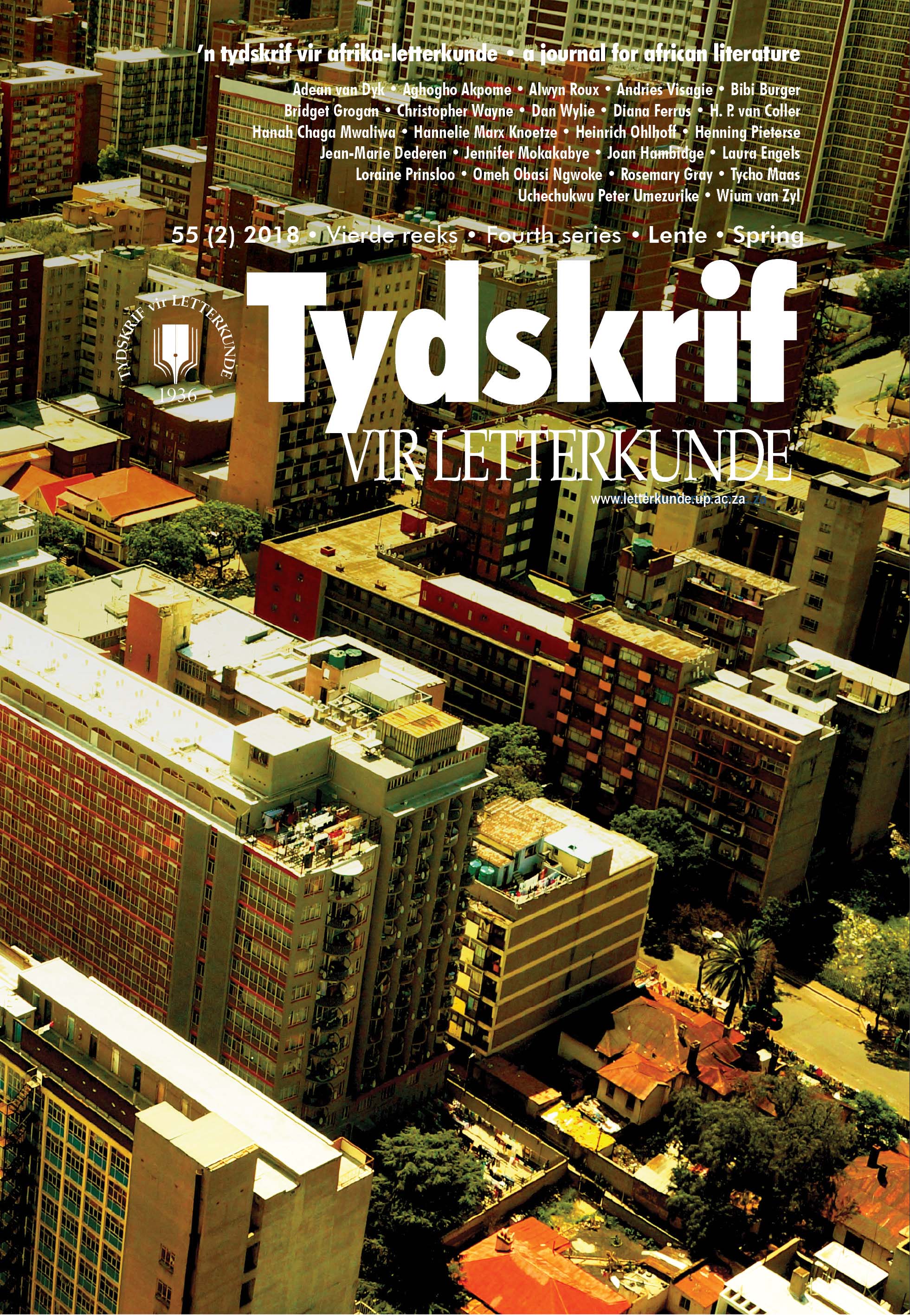“We are his children”: de Landmanfamilie als erfgenaam van Adamastor
DOI:
https://doi.org/10.17159/2309-9070/tvl.v.55i2.1987Keywords:
André Brink, Adamastor, Portuguese Mythology, Os LusiadasAbstract
In Die eerste lewe van Adamastor (The first life of Adamastor, 1988) André Brink reinvented the giant Adamastor, introduced in 1572 with the publication of Os Lusíadas, the Portuguese epic by Luis de Camões. So fascinated was Brink by the Southern African monster, that he wanted to write more novels containing new personifications of Adamastor. An Act of Terror (1992) can be seen as his most prominent Adamastor novel. An addendum entitled “The Chronicle of the Landman Family: As told by Thomas Landman” was included in this novel. In this article, I focus on this chronicle and unravel the way in which Adamastor manifests himself in every character, because each figure bears some resemblances to the Adamastor that Brink recreated in T’kama, the protagonist in Die eerste lewe van Adamastor (1988). All the characters in the Landman family fight against a dominant entity, but they do it on their own terms. This article shows that Brink uses the Adamastor figure as a metaphor for conflict, but also for reconciliation and protection. Against the background of these characteristics, Adamastor also appears to be a personification of different ideological constructs and of the continent of Africa. Furthermore, Adamastor’s appearance is a key feature to understanding how ideology transforms the representation of historical knowledge in Brink’s novel.
Downloads
References
Brink, André. Die eerste Lewe van Adamastor. Goodwood: Nasionale Boekdrukkery (Saayman & Weber), 1988.
Brink, André. “The Chronicle of the Landman Family: As Told by Thomas Landman”. An Act of Terror. 2nd ed., Mandarin Paperbacks, 1992, pp. 626-827.
Brink, André. “Herontdekking van een Continent.” Herontdekking van een Continent: Essays. Translated by Jos Den Bekker, Meulenhoff, 1999, pp. 184-202.
Brink, André. Kennis van die aand. Human & Rousseau, 1973.
Brink, André. “Reimagining the Past: André Brink in Conversation with Reingart Nethersole.” T’kama-Adamastor: Inventions of Africa in a South African Painting. Edited by Ivan Vladislavic, University of Witwatersrand, 2000, pp. 49-57.
Brink, André. “The Chronicle of the Landman Family: As Told by Thomas Landman”. An Act of Terror. Mandarin, 1992, pp. 626–827.
Camões, Luís de. De Lusiaden. Trans. Arie Pos. L. J. Veen, 2012.
Engels, Laura. “Vele Lewens van Adamastor”: De Mythische Figuur Adamastor (Os Lusíadas) in drie Zuid-Afrikaanse Romans. MA thesis, Ghent University, 2016. https://lib.ugent.be/en/catalog/rug01:002304077.
Ferreira, Ockert Jacobus Olivier. Adamastor. Gees van die Stormkaap. V&R Drukkery, 1995.
Gray, Stephen. Southern African Literature. An introduction. Harper & Row Publishers, 1979, pp. 38-72.
Peirce, Frank. “The Place of Mythology in the Lusiads.” Comparative Literature, vol 4, no. 2, 1954, pp. 96-122.
Van Wyk Smith, Malvern. Shades of Adamastor: Africa and the Portuegese Connection: an Anthology of Poetry. Acme Print & Pack, 1988.
Viljoen, Louise. “Monsters vir kinders en volwassenes: ’n Vergelyking tussen Antjie Krog se bundels Mankeplank en ander monsters (1985) en Jerusalemgangers (1985).” Stilet vol. 13, no. 1, 2011, pp. 87–113. http://hdl.handle.net/10520/EJC109953.
Downloads
Published
Issue
Section
License
Copyright (c) 2018 Tydskrif vir Letterkunde

This work is licensed under a Creative Commons Attribution-ShareAlike 4.0 International License.


 https://orcid.org/0000-0001-6465-6584
https://orcid.org/0000-0001-6465-6584


.png)